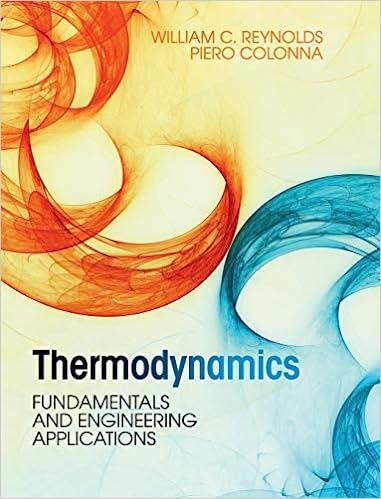A control mass consists of a mixture of fluids in a pistoncylinder system. The weight of the
Question:
A control mass consists of a mixture of fluids in a piston–cylinder system. The weight of the piston maintains a constant pressure P on the fluid mixture, which is also maintained at a constant temperature T by heat transfer to the cylinder walls. Irreversible chemical reactions within the fluid cause changes in the composition, resulting in changes in the volume, internal energy, enthalpy, and entropy of the mixture that eventually lead to an equilibrium state. Denote these changes by ΔV, ΔU,ΔH, and ΔS (Δ = final− initial). Kinetic and potential energy changes in the mixture are negligible. The enthalpy is defined as H ≡ U + PV so that (at constant P) ΔH = ΔU + PΔV. The Gibbs function is defined as G ≡ H − TS, so that (at constant T) ΔG = ΔH − TΔS. Starting from basic principles, develop an expression for the amount of entropy produced (PS) in terms of the changes defined above, T and P. Then, use this to show ΔG ≤ 0 for any changes that occur in this system at constant T and P. This result forms the basis for analysis of equilibria in vapor–liquid mixtures and in mixtures of reacting fluids.
Step by Step Answer:

Thermodynamics Fundamentals And Engineering Applications
ISBN: 9780521862738
1st Edition
Authors: William C. Reynolds, Piero Colonna




